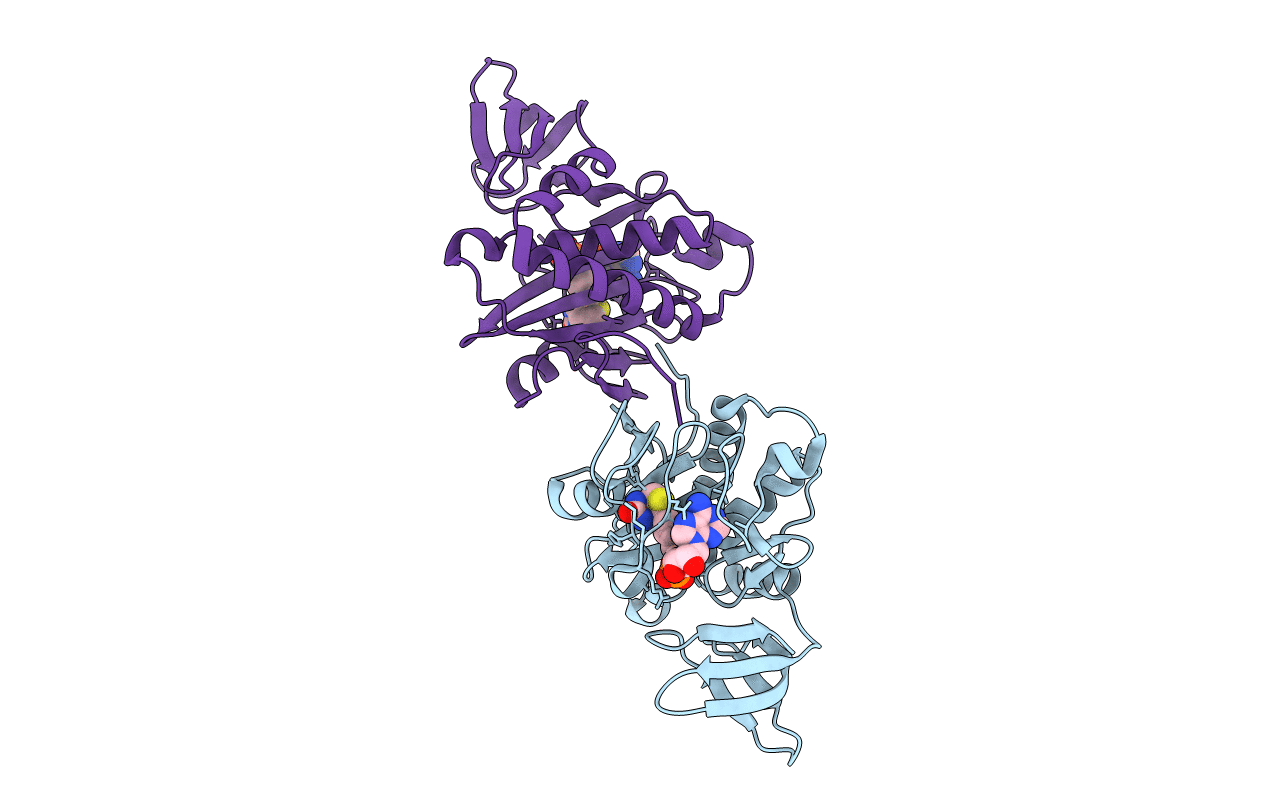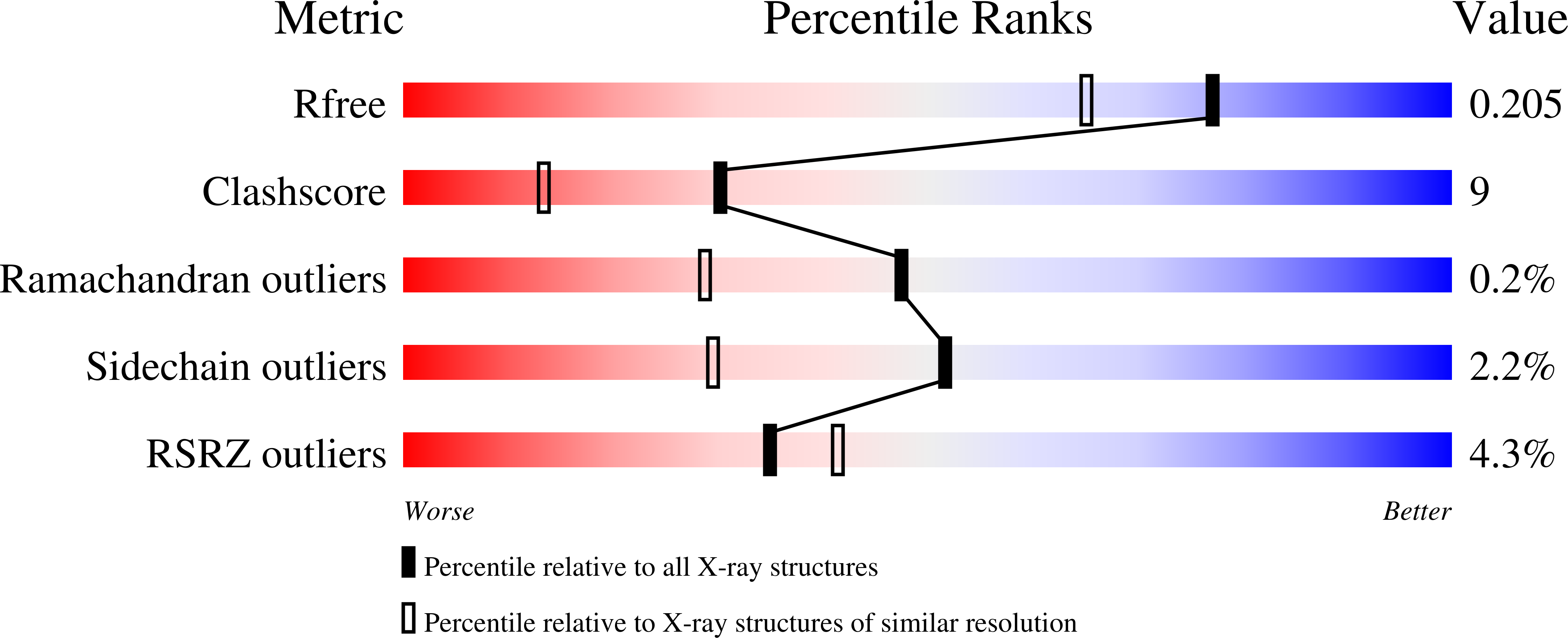
Deposition Date
2006-12-01
Release Date
2007-06-05
Last Version Date
2023-10-25
Entry Detail
PDB ID:
2E41
Keywords:
Title:
Crystal Structure Of Biotin Protein Ligase From Pyrococcus Horikoshii Complexed with the Reaction Product Analog Biotinol-5'-AMP, Mutations R48A and K111A
Biological Source:
Source Organism:
Pyrococcus horikoshii (Taxon ID: 70601)
Host Organism:
Method Details:
Experimental Method:
Resolution:
1.75 Å
R-Value Free:
0.20
R-Value Work:
0.18
R-Value Observed:
0.18
Space Group:
P 1 21 1


